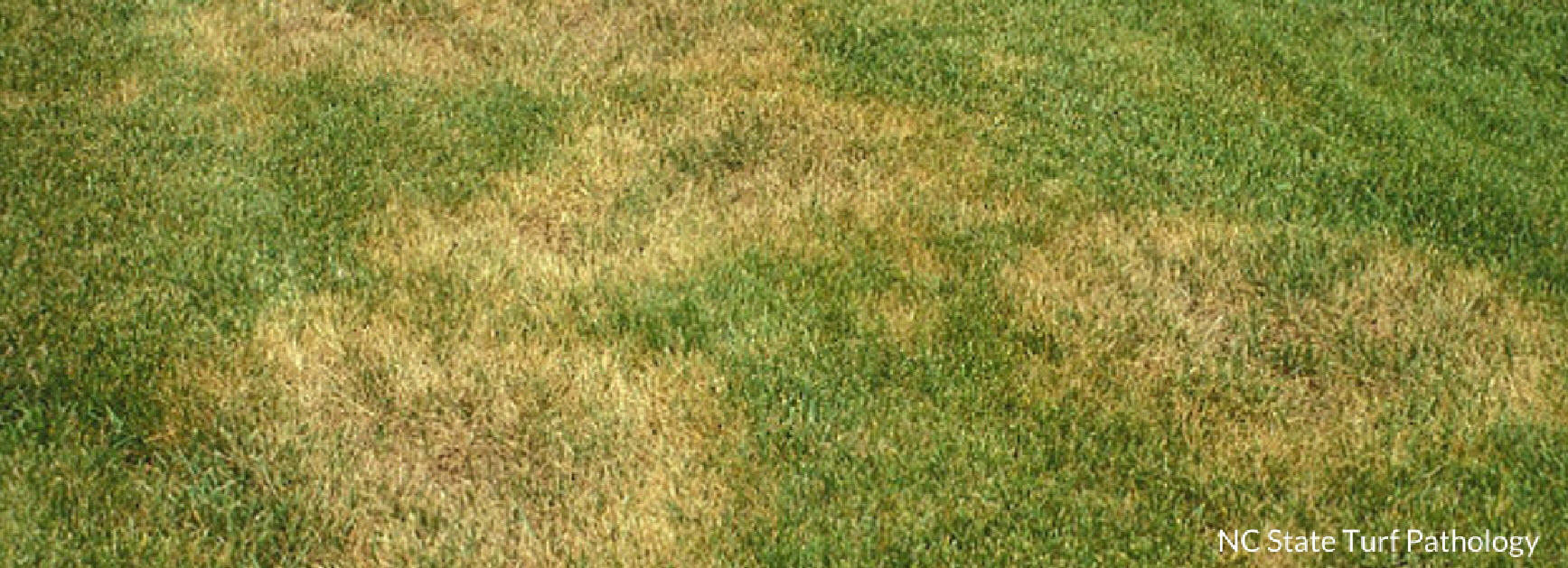Brown Patch

North
Grass species affected
- Bluegrass
- Fescue
- Ryegrass
Disease occurrence
- Mid-June through early-September
Symptoms
- Circular brown patches up to 3 feet in diameter that develop during hot, wet weather.
- Infected leaf blades are dark, wilted, and die quickly.
- The entire patch will eventually become brownish-tan.
Management:
- Avoid using high-nitrogen fertilizers in late-spring through early-summer. Milorganite® releases nitrogen slowly and can be used safely.
- Reduce thatch to increase air circulation.
- Water deeply and infrequently early in the day to allow the leaf blades to dry off and not remain wet for long periods of time, as brown patch thrives in this environment.
- Avoid excessive fertilization with high nitrogen fertilizers in late spring or early summer.
- Mow unaffected areas first and diseased areas last to avoid infecting areas of a healthy lawn.
- Collect and dispose of grass clippings in the garbage when the brown patch lawn disease is present.
- To avoid spreading the fungus, after mowing, clean the mower blades by rinsing with water and drying with a cloth.
South
Grass species affected
- All warm-season grass species, especially St. Augustinegrass and zoysiagrass
Disease occurrence
- November through May
Symptoms
- Circular brown areas up to 20 feet in diameter that typically develop during cool, wet weather in spring or fall.
- Leaf-blades wilt and die, resulting in large brownish-tan areas.
Management
- Avoid applying excess nitrogen in fall, or any other time of year, especially from quick-release or soluble, liquid fertilizers. Milorganite® releases nitrogen slowly and can safely be used.
- Mow unaffected areas first and diseased areas last to avoid infecting areas of a healthy lawn.
- Collect and dispose of grass clippings in the garbage when the brown patch lawn disease is present.
- To avoid spreading the fungus, after mowing, clean the mower blades by rinsing with water and drying with a cloth.
- Water deeply and infrequently early in the day to allow the leaf blades to dry off and not remain wet for long periods of time.

